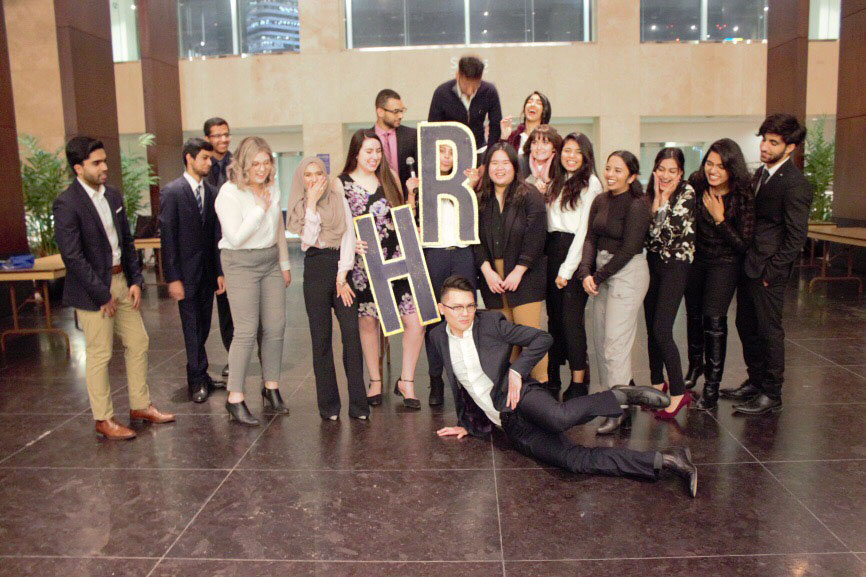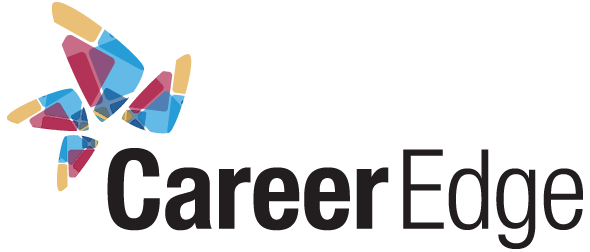[This week’s blog comes from Sonia Ragbeer, who just earned her Bachelor of Commerce from Ryerson University, majoring in human resources management and minoring in marketing. Last month, she completed her one-year term as President of Ryerson’s Human Resources Student Association.]
It was intimidating inheriting the torch of a university student group. With my aspirations at stake, it felt like playing chess against myself, with my perfect opponent suspended in my future reality. The previous president was unique. His one-year term was fuelled by heart, dedication, and hope. How would I follow? I needed to reach the top of my game.

Sonia Ragbeer
Throughout my university career, I lived on acronyms and anagrams. I used them to remember every HR and business theory, so that’s how I’ll tell my story of leading Ryerson’s Human Resources Student Association for 2018-2019 – with anagrams (sort of!) of TEAM.
Tea
[Editor’s Note: ‘Tea’ is the 2019 slang for news, inside scoop, buzz, word on the street…]
Leadership is challenging. You’re managing heavy expectations, member and team growth, and doing the right thing. It’s like pushing a boulder up a mountain and reaching metres of the peak, only for that boulder to plummet down to ground level, taking you with it (unless you’re an MXC master, then I envy you). As others often forget that we’re all human, the importance of your role is devalued. Every student has strengths, weaknesses, quirks, and things they’re dealing with in their personal lives. As President, I connected HRSA’s goals with the students I managed who could deliver these goals.
Aside from student group attrition, elitism, and internal politics, why did I do this?
It was the determination and hunger of these students that made it worthwhile. They’re adaptable. They spend so much time practicing, testing, and learning from their decisions. In four years, they’ve become masters of their craft. Employers consider Ryerson HRSA alumni behaviourally advanced and technically proficient – it’s been evidenced by their climbs up the university student group ladder and the prestigious jobs they secure quickly upon graduation.
Team
My term started with conducting 80 interviews and filling 24 roles. A student body of 1,100 HR students deserved a superstar team. In every interview, I sought passion and authenticity. (My term taught me how to distinguish passion and authenticity from self-serving agendas and ‘BS’.) Even through funding cuts and other obstacles, our superb team – and the passion each member exuded – hosted several sold-out events. The Human Resources Industry Conference (previously named OBCC) and HR Showcase delivered on our mission of challenging, supporting, and providing valuable networking opportunities for aspiring HR professionals. These events provided meaningful insight of the HR field from current industry professionals. We even collaborated with students in engineering, graphic design, and Ryerson’s other communities to support their professional development.

Source: Ryerson Human Resources Student Association
To adapt to HR’s changing demographics, I placed graphic design, finance, and law students in roles that challenged them, allowing the creative license for their talents to thrive. During difficult times, my team supported each other. We built a family through communication, empathy, validation, and understanding. I always said, “I’ll never be able to read your mind. Tell me what you need so I can help.” The mantra trickled down as my directors raved about their vice-presidents. I let go of micromanaging because they needed to learn accountability for their teams, actions, and decisions. They supported each other and learned from mistakes, surviving through change and leading when necessary.
Met
Meeting faculty, industry professionals, other student leaders, and the student body my team represented were invaluable.
Students attend our events looking for friends, guidance, and support. When unprepared, it can feel like a big world is swallowing you, but my team helped these students and eased their burdens. The student body is like a sponge – absorbent of everything, understandably excited (and nervous) for the future, and ready to release that excitement. I thank them for their enthusiasm which kept me motivated to improve the student experience.
The faculty cultivated an environment for learning. I reported to them, holding accountability for the allocation of funds and delivering projects that add value to the student experience. I thank them for their endless questioning which kept me critical and analytical of every decision I made.
The industry professionals took time to support us. They were us once. They recognized our vulnerability and helped us in ways we’ll never fully understand until we assume their positions and give back to the next decade’s graduating classes. I thank them for giving without asking for a return which kept me inspired to follow suit when I ‘make it’ one day.
Me
A 360-degree reflection of yourself is key to becoming the best team player. My term taught me how to take an honest look at myself. I needed to reach the top of my game (queue Troy Bolton’s ‘Bet on It’). I needed to be Tony Stark and his suits – perpetually learning and improving. There’s no ready because life doesn’t wait. You take the plunge or don’t – then move forward without regret.
I entered the role of HRSA President with nervousness and self-doubt, but my team was supportive and fantastic. They accepted me. And for that, I’m grateful. Understanding myself helped me understand others.
Thank you HRSA for the people, connections, lessons, and growth. You taught me how to smile as we pushed that boulder up the mountain together. I don’t know if we ever reached the peak, but we certainly reached the top of our game.

